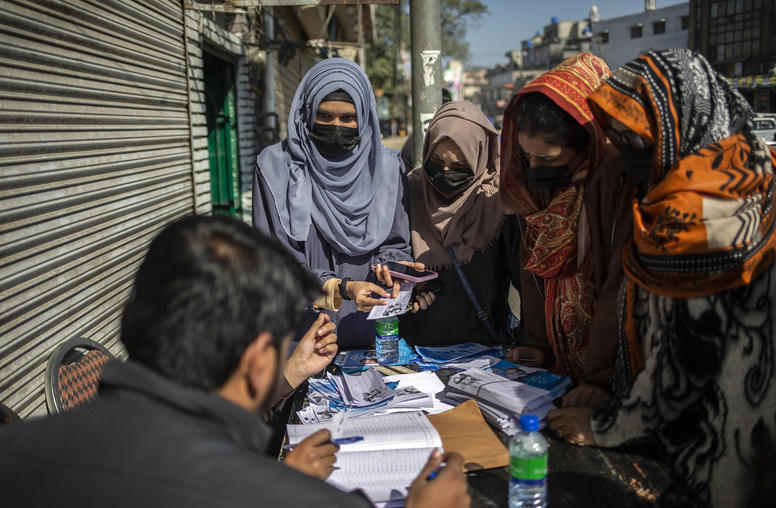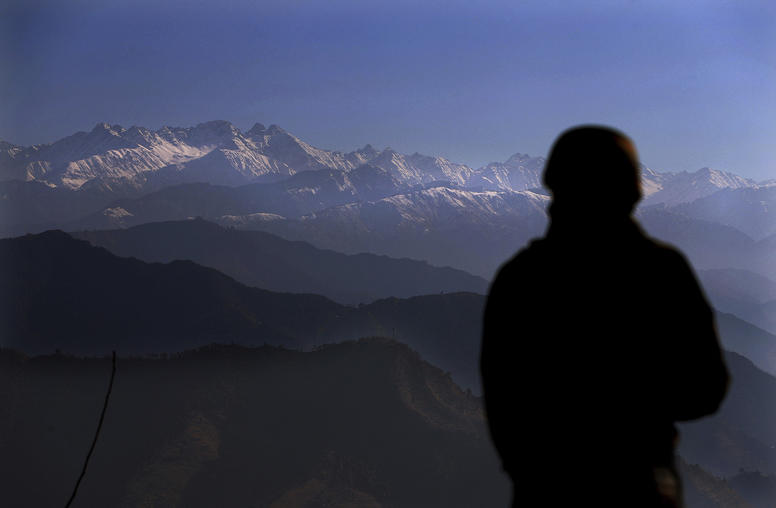‘Worrying Fragility' Marks Afghan Nation-Building
Afghanistan has benefited from some “amazing” social and economic advances in recent years, but “at the same time, there is a very worrying fragility” as military forces and aid from the United States and other countries wind down, J. Alexander Thier, director of the Office of Afghanistan and Pakistan Affairs at the U.S. Agency for International Development (USAID), told an audience at the United States Institute of Peace (USIP) on November 17.
November 23, 2011
Afghanistan has benefited from some “amazing” social and economic advances in recent years, but “at the same time, there is a very worrying fragility” as military forces and aid from the United States and other countries wind down, J. Alexander Thier, director of the Office of Afghanistan and Pakistan Affairs at the U.S. Agency for International Development (USAID), told an audience at the United States Institute of Peace (USIP) on November 17.
Thier, who was previously the senior rule of law adviser and director for Afghanistan and Pakistan at USIP, spoke as part of a panel discussion that offered a sobering look at the development of the Afghan government and society over the past decade, a forum titled “Can Less be More in Afghanistan? State-building Lessons from the Past to Guide the Future.”
The USIP event was held just three weeks before a second international conference convenes in Bonn, Germany, on December 5 to examine the transition to Afghan responsibility in 2014 and the international community’s long-term support. The Institute event also examined the shift from the “incredible hope and optimism,” as USIP Director of Afghanistan and Pakistan Programs Andrew Wilder put it, characterizing the early years in post-9/11 Afghanistan to a skeptical questioning of what this historic attempt at state-building has achieved. Wilder also expressed concern about the bubble economy of war and aid resources that has been created over the past decade. Wilder asked, “Now that we’ve created this bubble, is there a way to let the air out of the bubble in a manner that is not destabilizing?”
With reductions in both U.S. aid and military presence certain in the coming years, Thier said that USAID is trying to focus on programs that build “resilience and sustainability” in Afghanistan. “The transition has been a tremendously important focusing mechanism,” said Thier, who described USAID as having a “strategy to put Afghans in the driver’s seat.”
Among achievements of the past decade, Thier pointed to a “dramatic” improvement in Afghan infant mortality, a vast expansion of public education for Afghan children (with 35-40 percent of students now girls) and—despite the reach of criminality—growth of the licit economy. He cited as two of the most successful internationally backed efforts the National Solidarity Program (which helps Afghan communities manage their development projects) and the Ministry of Health’s provision of what are called basic packages of health services.
USAID programs in Afghanistan are now being subjected to what Thier called a “sustainability audit”—assessments of their long-term viability as U.S. funding declines.
USAID, he said, is concentrating on “foundational investments” in three broad areas: human capacity through the development of governmental institutions and civil society; economic growth and viability; and infrastructure that fosters prosperity as well as regional economic links.
At the same time, Thier said that USAID has stepped up accountability mechanisms to safeguard U.S. taxpayer money in such areas as procurement, vending and monitoring and evaluation.
Other speakers offered critiques of the international community’s state-building efforts in Afghanistan.
Western nations showed an inflated “faith in social engineering” from the outside, said Astri Suhrke, a political scientist and peacebuilding specialist who is a senior researcher for the Chr. Michelsen Institute in Norway. As the shortcomings of state-building efforts grew clearer, Suhrke said via Skype from Oslo, the international community’s “light footprint” and the sense that it was doing too little were blamed. Few questioned whether the state-building endeavor was, in fact, trying to do too much rather than too little. The solution was, therefore, “we added more troops, more money and more consultants”—a reaction that itself quickly became counterproductive.
Suhrke argued that external aid reached levels beyond what the Afghan economy could productively absorb—some 85 percent to 90 percent of local revenues—and constructed a dependent state with vulnerable foundations: “We have created in Afghanistan a rentier state that is unprecedented in Afghan history,” and perhaps internationally. That dynamic has given incentives to Afghan elites both for corruption and to be more attuned to international donors than to Afghan citizens, contributing to “the present profound crisis of legitimacy,” said Suhrke, the author of When More is Less: The International Project in Afghanistan.
Still, the military drawdown should weaken the rationale for militancy, and the aid reductions will serve to reduce the predations of some corrupt elites, she said. In the future, “we have to be more modest,” she said. “We have to be less ambitious.”
Michael Semple, a fellow at the Carr Center for Human Rights Policy at Harvard and a leading expert on the Taliban and Afghan politics, also cited a “blind delusion” and “an element of hubris” in the state-building project. Still, he suggested, “sufficient good has happened that it justifies staying with the engagement”—albeit in a “more humble role.”
The nation-building project suffered from a piecemeal approach and the lack of “a single roadmap,” added Mohammad Haneef Atmar, an expert on Afghan development who has served variously as Afghanistan’s minister of rural rehabilitation and development, of education and of interior. He said the international community had made a “strategic failure” in not funding the large-scale training of young Afghans as future civil servants. “There is no substitute to building human capital for a nation,” Atmar said.
* * * * *
The Nov. 17 event was one of a series scheduled by USIP in the weeks before and after the Bonn Conference on Dec. 5 to examine various facets of the current conditions and future prospects in Afghanistan. To learn more, visit USIP’s Events page.



